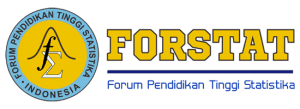PENGGUNAAN RESAMPLING DALAM PENGGAMBARAN QUICK COUNT
Abstract
Keywords
Full Text:
PDFReferences
Bima (2013), “Pembentukan Sampel Baru yang Masih Memenuhi Syarat Valid dan Reliable dengan Teknik Resampling pada Data Kuisioner Tipe Yes/No,” Prosiding Seminar Nasional Matematika UNY.
Estok (2002), “The Quick Count and Election Observation: Handbook for Civic Organizations and Political Parties Penerbit Nasional Democratic Institute for International Affairs.”
Israel (1992), “Determining Sampling Size,” University of Florida.
Juwairiah (2009), “Aplikasi Quickcount Pemilihan Presiden RI Menggunakan Teknologi Mobile,” Prosiding Seminar Nasional Informatika 2009 (semnasIF 2009) UPN “Veteran” Yogyakarta, 1979–2328.
Kismiantini (2007), “Pengumpulan Data dengan Quick Count dan Exit Poll,” Prosiding Seminar Nasional Penelitian, Pendidikan dan Penerapan MIPA, FMIPA Universitas Negeri Yogyakarta.
Kompas (2014), “Bagaimana cara kerja ‘Quick Count’?,” https://nasional.kompas.com/read/2014/07/11/06330421/Bagaimana.Cara.Kerja.Quick.Count.
Muhtadi (2019), “Sejarah Quick Count sebagai Alat Kontrol Kecurangan,” Business Lounge Journal.
Nurdin (2018), “Aplikasi Quick Count Pilkada dengan Menggunakan Metode Random Sampling Berbasis Android,” Techsi, 10, 141–153.
Omair (2014), “Sample size estimation and sampling techniques for selecting a representative sample,” Journal of Health Specialties, 2, 142–147.
Setiawan (2014), “(Monte Carlo) Resampling Technique in Validity Testing and Reliability Testing,” International Journal of Computer Application, 91, 6–11.
Taherdoost (2016a), “Sampling Method in Research Methodology; How to Choose a Sampling Technique for Research,” International Journal of Advance Reseacrh in Management, 5, 18–27.
Taherdoost (2016b), “How to Design and Create an Effective Survey/Questionnaire; A Step by Step Guide,” International Journal of Advance Reseacrh in Management, 5, 37–41.
Ulya (2017), “Analisis Prediksi Quick count dengan Metode Stratified Random Sampling dan Estimasi Confidence Interval Menggunakan Metode Maksimum Likelihood,” UNNES Journal of Mathematics, 7, 108–119.
DOI: https://doi.org/10.34312/jjps.v1i1.5643
Refbacks
- There are currently no refbacks.
Copyright (c) 2020 Jambura Journal of Probability and Statistics

This work is licensed under a Creative Commons Attribution-NonCommercial 4.0 International License.







.jpg)






